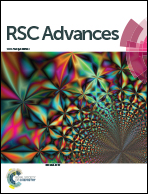Human neutrophils ROS inhibition and protective effects of Myrtus communis leaves essential oils against intestinal ischemia/reperfusion injury
Abstract
The aim of the present work was to investigate the mechanism implicated in the protective effects of Myrtus communis leaves essential oils (MCEO) on human neutrophils reactive oxygen species (ROS) production. We also studied its preventive effect against intestinal ischemia reperfusion (IIR)-induced oxidative stress in rat model. Essential oils were obtained from the plant leaves by hydrodistillation and analyzed by GC-MS. Neutrophils were isolated from whole human blood using ficoll–dextran method. ROS generation and H2O2 production were measured by luminol-amplified chemiluminescence. The cytochrome c reduction assay was used for superoxide anion determination and Western blotting analysis was to determine the neutrophils myeloperoxidase (MPO) expression. Rats were divided into four groups: control (C), intestinal IR (IIR), MCEO, and MCEO plus IIR. Animals were pretreated with MCEO (50 mg kg−1) during 7 days. IIR was produced by 75 min of intestinal ischemia followed by reperfusion for 120 min. The GC-MS analysis, allowed to the identification of twenty five bioactive compounds in MCEO. In vitro, we found that MCEO inhibited ROS and H2O2 production and attenuated the neutrophils MPO expression. In vivo, the MCEO administration counteracted IIR-induced small intestine, lung and liver lipid peroxidation as well as the depletion of antioxidant enzymes activities such as superoxide dismutase (SOD), catalase (CAT) and glutathione peroxidase (GPx). MCEO pretreatment also corrected IIR-induced non-enzymatic antioxidants levels depletion such as sulfhydryl groups (–SH) and reduced glutathione (GSH). More importantly, IIR was accompanied by H2O2, free iron and calcium increase while MCEO administration reversed all intracellular mediator perturbations. In conclusion, we suggest that MCEO had a potential protective role against intestinal IR injury, in part owing to its antioxidant potential and ROS scavenging activities.


 Please wait while we load your content...
Please wait while we load your content...